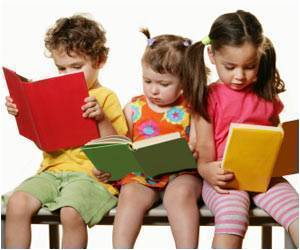
, revealed that friendships reflect classroom seat assignments. Students sitting next to or nearby one another were more likely to be friends with one another than students seated elsewhere in the classroom. Moreover, longitudinal analyses showed that
Advertisement
Participants in the study included 235 students (129 boys, 106 girls) in grades 3 – 5 (ages 8-11) who nominated friends at two time points (13 -14 weeks apart). Children attended a public primary school in South Florida that reflected public school students in the state in terms of ethnicity and family income.
For the study, teacher seating charts were used to calculate three forms of proximity for each pair of students in a classroom. Neighbor proximity described classmates seated directly beside one another in a row or at a table, and those seated directly across from one another at a table. Group proximity included classmates identified as neighbors as well as those who were near neighbors; the latter were either one seat away in the same row or diagonal to one another at the same table. Findings for group proximity were the most robust, suggesting that children are willing (and able) to overlook their nearest neighbors in favor of those seated close enough for sustained communication.
“Of course, students were not glued to their seats; interactions with far-seated peers undoubtedly occurred during lunch, recess and (in some classes) free time activities,” said Laursen. “The fact that new friends tended to emerge among the newly near-seated – despite opportunities for engagement with other classmates – underscores the power of proximity in friendship formation.”
READ RELATED: CDC launches Emergency Activation Center to combat growing monkeypox outbreak
Classroom proximity assumes outsized importance during the elementary school years because children this age have few other sustained opportunities to meet (and engage with) friends and because companionship is central to the definition of friendship. It has long been known that most children report that most of their friends are in the same classroom. We now know that they are probably seated nearby.
Elementary school children spend most of their days in assigned seats, in the company of classmates. In most elementary school classrooms, teachers decide who sits next to whom and, by extension, who interacts with whom.
“Taken together, our findings highlight the enormous influence that teachers wield over the interpersonal lives of children. With great power comes great responsibility,” said Laursen. “We urge teachers to exercise their power judiciously. Unintended social consequences have been known to arise when adults meddle in the social lives of children.”
Source: Eurekalert
Source:





